
Earth Sheltered Design
Earth sheltering is a construction and design method that uses earth as part of a building’s thermal control system. It can involve building a wall of earth around the outside of a home, or building a home into an existing hillside. In simple words, it’s burying portions of a building underground.
Not to be confused with green roofs which are discussed later in this document.
Benefits:
People have been utilizing the earth for its benefits for thousands of years. For example, turf houses are the original green buildings in Iceland, dating back to when Iceland was first settled in the 9th century. They are built using natural materials, such as local wetlands and lava stones, to create thick walls that insulate against wind and cold weather.
- Gain the advantages of sheltering in the earth, which means a stable earth temperature – this reduces the extremes of weather. It will be naturally warmer in the winter and naturally cooler in the summer.
- Natural sound-proofing
- Less of the building exposed to the exterior and UV rays, meaning less maintenance required. This of course comes with the caveat that the earth sheltering aspect is detailed and waterproofed correctly.
- You can take advantage of building into different orientation faces depending on prevailing winds, local temperature, etc.
- Vegetated roof both reduces heat gain and heat loss.
- Better protection from natural threats like hail and tornadoes.
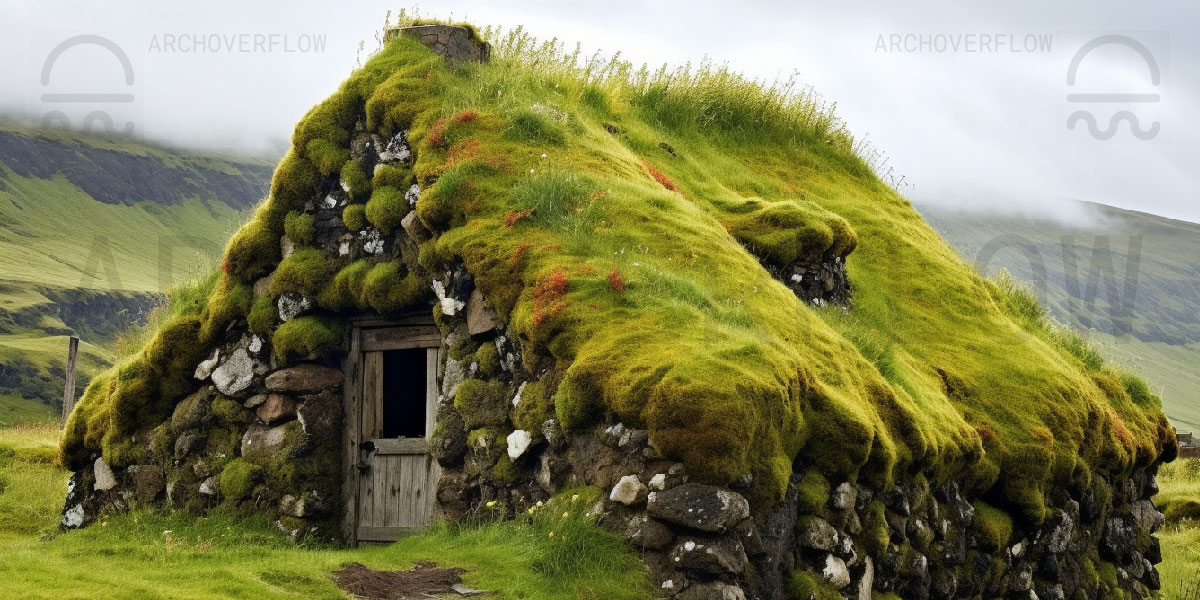



3 Main Approaches to Earth Sheltered Design
These are just guidelines if we try to fit earth sheltered buildings into buckets, but there are variances of course.
- Structure is built above grade, and earth is bermed against the walls on one or more sides and over the top of the structure.
- The structure gets built into the side of an existing hill/mound/mountain.
- In the Northern hemisphere, a good strategy is to have the North side built into the hill with the South side exposed for solar heating, views, and daylighting.
- In Either 1 or 2, the East and West facades are either exposed or covered/bermed.
- Completely buried in the earth with an internal courtyard in the middle to allow access to daylight, outdoor air, and ventilation.
Considerations
Typically, earth sheltered designs are only seriously used or considered for part of a building. There are of course a number of practical considerations regarding the use of earth.
- Natural slope would be preferable, this reduces the amount of earth moving to do. Regardless of existing conditions, you will always need to move a good amount of earth considering the building needs to exist below the soil.
- Soil should be granular for adequate drainage. Clay soils and expansive soils should be avoided.
- Site should be tested for radon, and if found, use radon abatement.
- Groundwater level must be below the building, and positive drainage maintained away from the building.
- Extra care for the waterproofing below grade and on the roof for below the soil.
Challenges
- Insulation, vapor barriers, and the entire wall assembly must be correctly designed to keep indoor temperature comfortable and to prevent condensation from forming on cool inside walls (especially in humid environments).
- Typically earth sheltered designs have fewer windows and therefore more concern is given for adequate ventilation and good air quality/humidity control. Also access to natural daylight is a concern, and solar tubes, skylights, and other strategies are used to bring light deep into the building.

Green Roofs
Green Roofs are also known as Vegetated Roofs, Garden Roofs, and Eco-Roofs.
Green roofs are a design, assembly, or system containing room for planting through the design itself or trays/containers which are filled with soil. As the name states, the plantings are located/installed on top of a roof which is appropriately designed for this.
- A subsurface irrigation system is generally recommended for green roofs.
- Green roofs can achieve LEED points
Advantages
Green roofs have become extremely popular in the 21st century. Architects and designers love that the green roofs are aesthetically pleasing, and owners love that it plays into a desired greenification that is happening across all building typologies increasing usable space, rent, and the like. However, beyond reconnecting a user with nature or economic benefits, a green roof has measurable ecological and other benefits.
- Reduces heating and cooling loads through thermal benefits by the added insulation via the soil media and plants.
- Plants help filter the air and dust particles, while also reducing the heat island effect.
- Plants additionally reduce stormwater runoff and absorb carbon dioxide.
- Protects roofing from ultraviolet light degradation which is one of the main causes of roofing materials breaking down over years.
- Acoustical benefits through the added mass, which also help guarding against wind, hail, and temperature extremes.
Definitions
Green roofs come in all shapes and sizes. You can have some that are able to support full grown trees, while some can just manage wildflowers. Definitions below help categorize these into two main groups.
There are many different companies and different systems that have been developed for both extensive and intensive roofs. A simple way to think is that there is different technology needed when the extensive roof is on a slope, vs when it is flat. This involves different layers, different substrates, and in general different engineering. Visit each manufacturer’s documentation for more details.
Extensive:
Green roof that uses soil less than 6” deep (typically).
Easy way to remember: ‘The green roof extends over a large area’
Capable of supporting plants such as wildflowers, grasses, sedums, herbs. Extensive green roofs are relatively thin, and therefore are lighter weight and will typically be used for existing structure renovations that are installed without additional structural support. They are also the most economical solution given ability to install via off the shelf products from a multitude of companies.
Intensive:
Green roof that uses deeper soil (typically) more than 12” thick, and can support complex landscapes.
Easy way to remember: ‘Because of its thickness, it’d be intensive work to install an intensive green roof’
Intensive green roofs can host shrubs, full grown trees, and be limitlessly thick. This allows features like ponds, fountains, and an entirely different environment to be created, and the building occupants can use the roof as they would if it were a park.
Due to the enormous structural requirements, intensive green roofs are typically only seen in new buildings where the structure can be designed for the increased load from the beginning
A great example is Lake Point Towers in Chicago. An intensive green roof, the private residence only garden features a pond, walking paths, and plenty of space for activities.
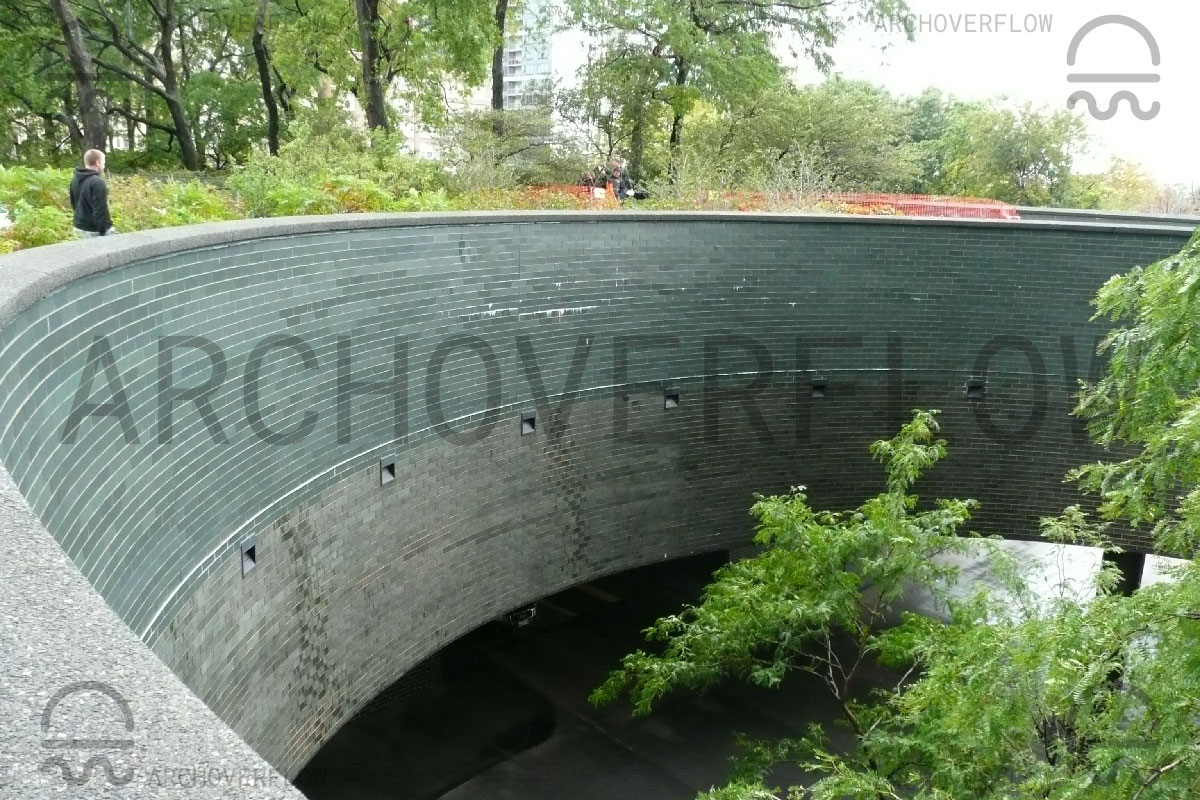
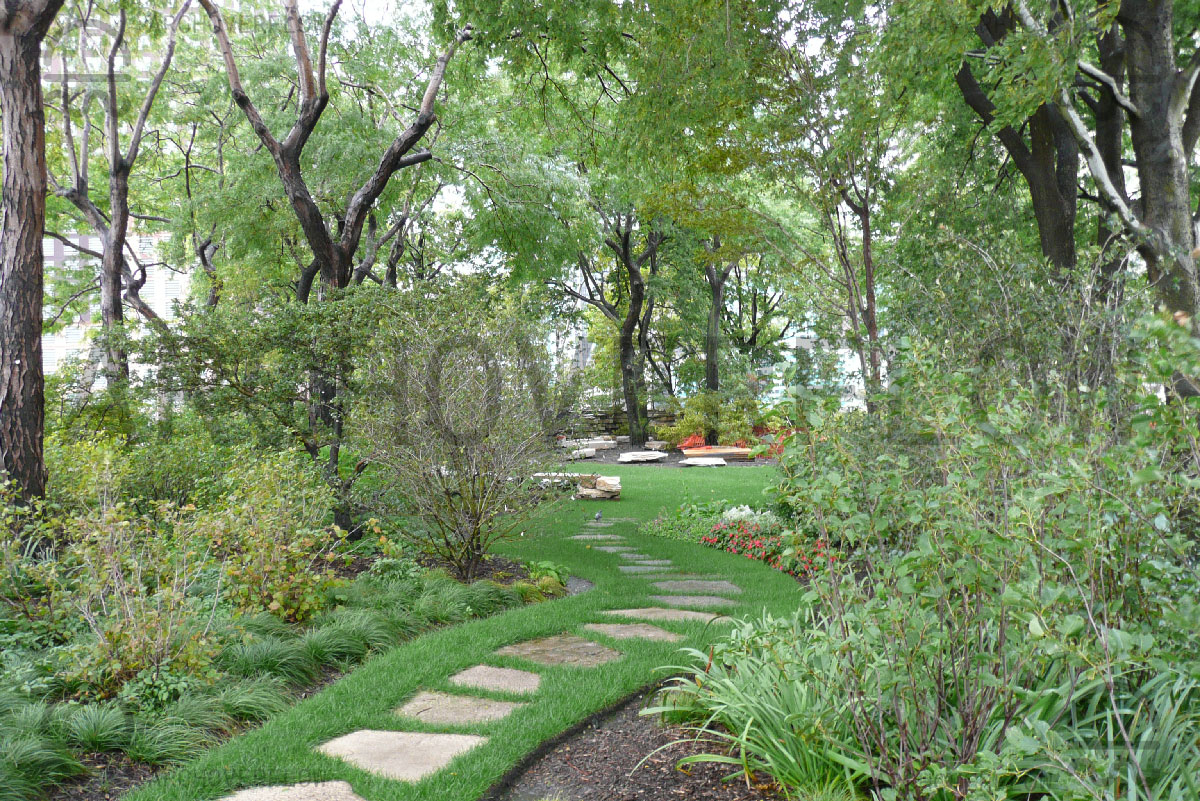
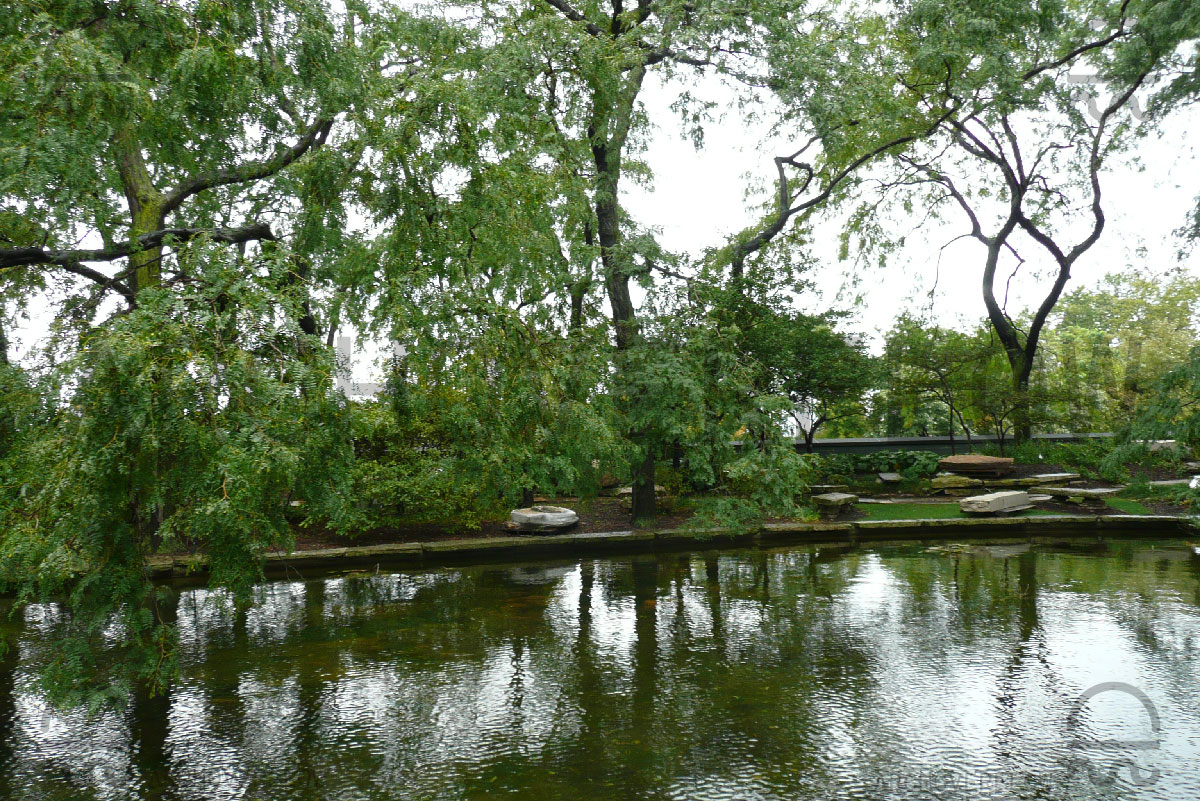

Another huge and amazing example is Millennium Park in Chicago. This artificial park area has over 2,000 parking spots across various garages that are located below a multitude of different surface programs. See below for a diagram of the parking footprints below the parks themselves.

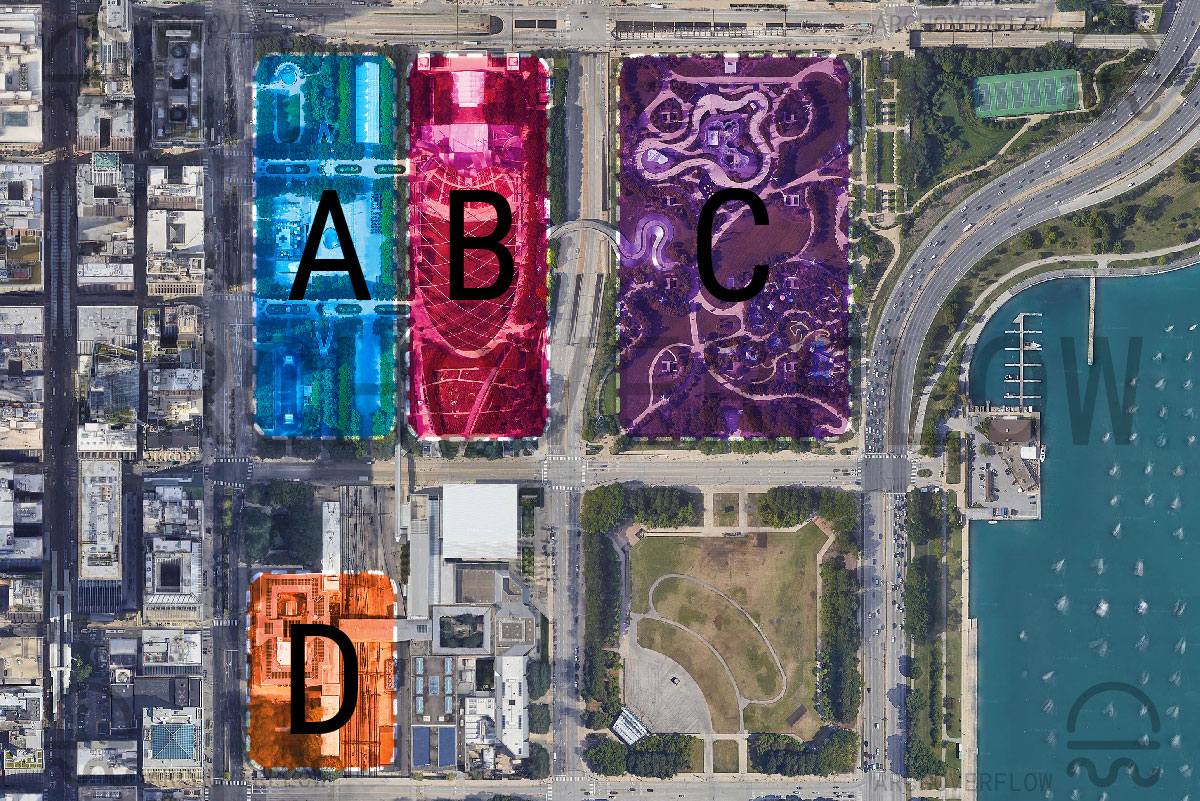


Difference
Intensive green roofs can be formed to feel like a natural occurring landform, where extensive green roofs will still showcase features of a typical roof like access paths, machinery, etc.
Engineering
Growth Medium
Soil as you would find outside is not typically what is utilized for green roofs, although the plantings may look the same. Green roof soils are engineered to be lightweight, drain extremely well, and specifically made to promote the growth of the plants desired; so they use additives such as sand, leca, and perlite.
Plants
The best plants for the design and job are determined on the green roof system used, local climate, maintenance, and aesthetic needs of the design.
Irrigation
Drip irrigation is always recommended (as it is in normal gardening / landscape design) since it is more efficient by delivering water directly to the roots and there is minimal water lost to evaporation.
Modular Plastic Containers
Modular plastic containers type systems have become extremely popular due to their cost, weighing less, and flexibility in layout and design. A modular system allows the system to be designed once by a third party, and then with relative ease applied to an existing more typical roof assembly. This provides benefits such as warranties and ability to layout the system to the specifics of the plan. You can easily remove pieces for maintenance and swap in and out pieces for replacing plants or changing designs around.
Weights
Green roofs typically weigh from 12 up to 300 PSF. Consult the designers/manufacturers specifications to understand more about weight requirements.


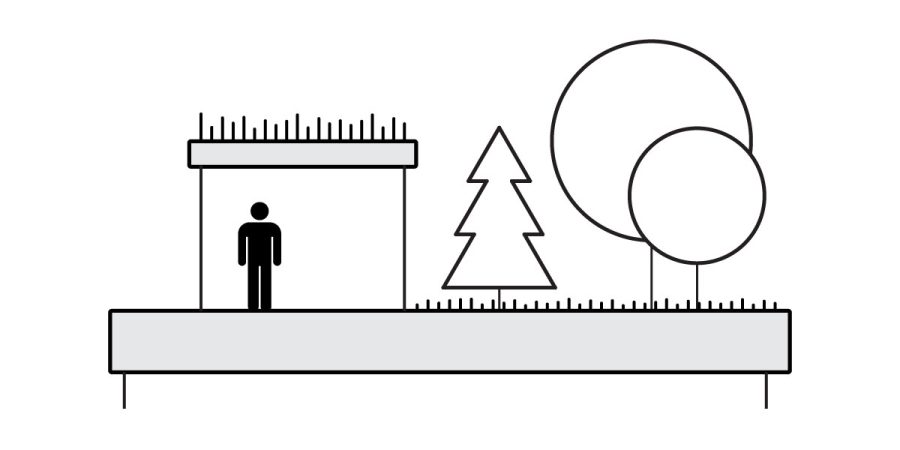
Leave a Reply
You must be logged in to post a comment.